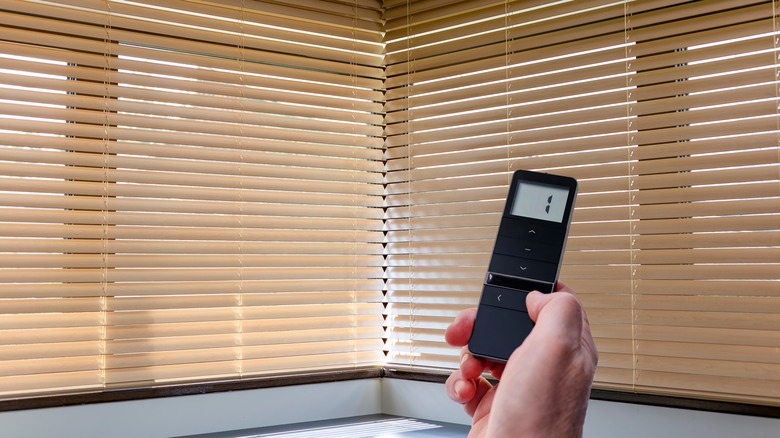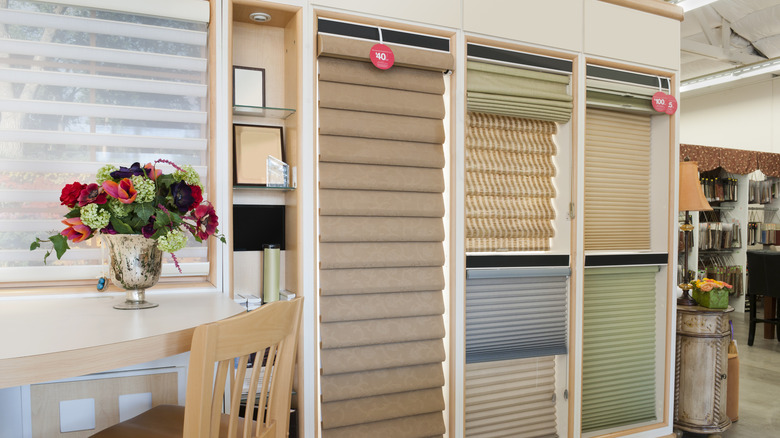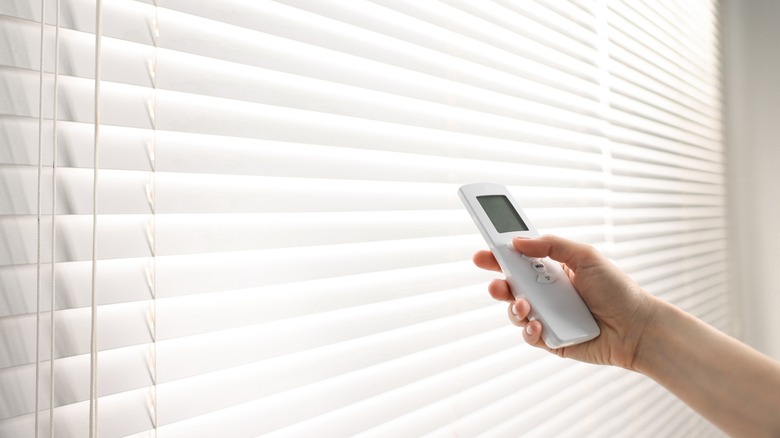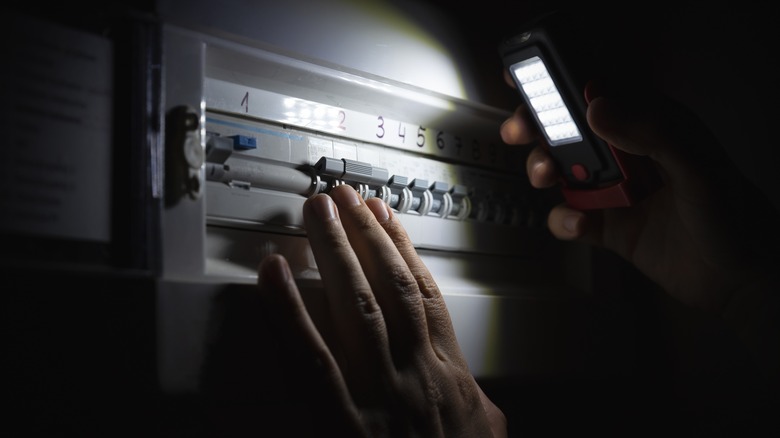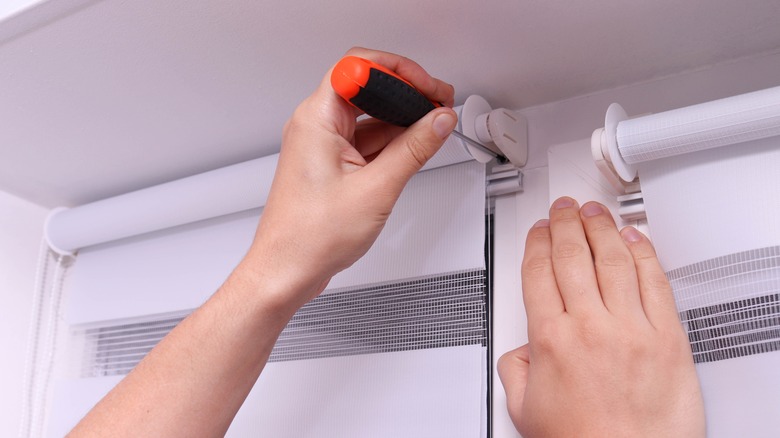Downsides You Should Know Before Investing In Motorized Window Treatments
Motorized window treatments certainly have their appeal. You can operate them by simply pressing a button on a remote (or even giving a voice command to your virtual assistant), so you can easily adjust the amount of light entering your room. No more stopping what you're doing to get up, walking to the window, moving the couch or table that's in the way, or stretching up to adjust the shade or blind. Motorized shades also improve accessibility for those with mobility limitations, can help you lower energy bills by blocking sunlight at set times of the day, and don't pose a threat to children like traditional blinds with long cords do.
However, while there are many benefits to choosing motorized window treatments for your living room, bedroom, or home office, there are a few other things you should consider before making a purchase. Most importantly, you'll want to evaluate the potential downsides of these treatments and how they might impact your pocketbook, your daily life, and your overall level of frustration.
They can be significantly more expensive than manual options
Motorized shades or blinds can certainly simplify your life. As with most things in life, though, that perk comes at a premium. You should expect to pay at least $200 more per window for a motorized option than you would for a manual model. And, sadly, that's the low end of the estimate and will likely only apply to small-to-average-sized windows. If you want to install a motorized shade or blind for a large bay window or one in a sunroom, you could be looking at a cost that is up to $1,000 more than you'd pay for a non-motorized option. As you can imagine, those costs can really add up if you're planning to install your blinds or shades on multiple windows in a room — or in multiple rooms within your home.
The cost to purchase the window treatments themselves is only one factor to consider. Unless you're planning to set them up yourself, you'll also want to account for installation costs, which can also be more expensive for motorized options. This increased cost relates to the added complexity for some installation jobs. For example, if you choose hardwired models or want the technician to make sure everything works seamlessly with your Amazon Alexa or other virtual assistants, that will take more time and cost more money.
Power outages or dead batteries can pose a major inconvenience
Pressing a button on a remote (or putting a request in with your virtual assistant) and having your blinds or shades open on command is great. But how are you going to feel when you press that button or ask your Amazon Alexa or Google Home and there's no response? Sadly, this is one of the downsides of motorized blades that you mustn't overlook. Hardwired blinds may not work in the event of a power outage. And if the battery on a battery-operated shade (or in the remote itself) dies, nothing is going to respond either.
For hardwired shades, you might just have to wait for the power to be restored before you can open or close them. As you can imagine, this can be a major inconvenience if you're trying to darken your room to sleep or stop the hot sun from beating into the living room. But if the shades are already closed when the power goes out, you might not be able to open them to let in natural light when none of your light fixtures or lamps work. Luckily, there are some motorized blinds and shades on the market that also allow for manual operation, so you might want to prioritize one of these if your home regularly loses power.
Battery-operated models are easier to keep operational, but they still require some effort. After all, the battery pack might be difficult to remove or higher up than you can easily reach. Many blinds also require multiple batteries, which could be problematic if you don't have enough on hand.
Connection and other technological issues may arise
There are many reasons to consider choosing motorized or even smart window treatments for your home. But if you've ever fought with a printer or sat exasperated in front of your computer when it simply wouldn't connect to the internet, then you know that technology can be finicky. Unfortunately, motorized blinds are not exempt from technological troubles, so you'll need to be prepared that they may arise from time to time. And you'll likely need to do some diagnostic work to pinpoint the specific issue that needs to be remedied.
If the blinds suddenly stop responding to the remote, the first thing to do is verify that they have power. If you know you haven't lost power, have checked the breaker box, or have changed the batteries, then you could be dealing with a Wi-Fi problem, a dead motor, or something else. If you're not able to diagnose the issue, you'll have to call in a professional. Not only will this cost you more money, but they also might not be immediately available, so you could be left without functioning blinds or shades for a while.
Maintenance will be required to keep the window treatments functioning properly
Many people fail to keep the big picture in mind before shopping for window treatments. With motorized blinds, that means accounting for the need for periodic maintenance. One maintenance task that you can likely handle yourself, though it might be tedious, is to regularly dust the shades. This is especially important to keep the electrical components clean and to make sure that debris doesn't interfere with their ability to operate properly.
If you encounter any issues with operation, such as strange noises when opening or closing the blinds, then you might want to hire a professional to assess the issue and fix it for you. Scheduling an inspection with a local expert is also not a bad idea. While you'll have to pay for this service, the technician might be able to catch an issue before it turns into a much bigger and more expensive problem.
